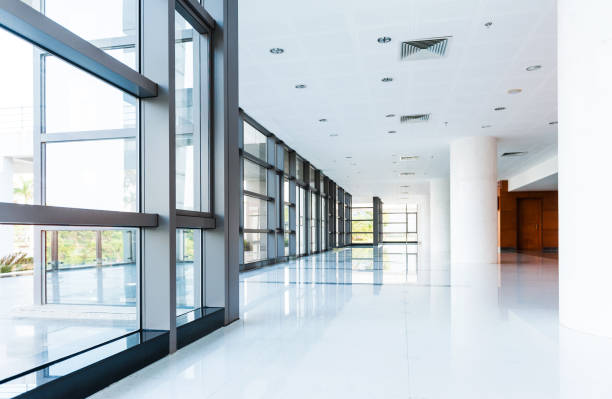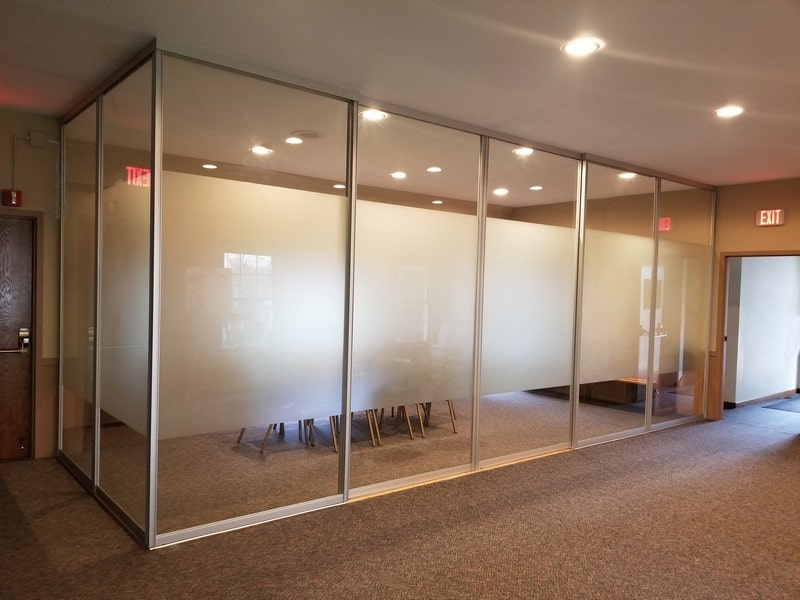
In today’s fast-paced work environment, employee wellbeing and morale have become top priorities for businesses looking to retain talent, enhance productivity, and foster a positive workplace culture. A well-designed office can play a pivotal role in achieving these goals by creating a space that meets employees’ physical, emotional, and psychological needs. Here, we share essential office design tips that not only elevate aesthetics but also contribute to a healthier, more vibrant work atmosphere.
1. Optimize Natural Light for Better Mood and Productivity
One of the most effective ways to boost employee wellbeing is by maximizing the use of natural light within the workspace. Exposure to natural light has been shown to improve mood, energy levels, and overall mental health.
Position Desks Near Windows: Arrange workstations so that as many desks as possible are near windows to allow for maximum sunlight. If full daylight exposure isn’t feasible, consider using Designing mirrors or glass dividers to reflect light deeper into the office.

Invest in Adjustable Lighting Solutions: For spaces where natural light is limited, adjustable LED lighting that mimics natural daylight can be a powerful alternative. Bright, warm lighting can help maintain energy levels throughout the day while reducing eye strain.
2. Incorporate Biophilic Design for a Connection to Nature
The concept of biophilic design incorporates natural elements into the workplace, helping employees feel connected to nature, which reduces stress and boosts wellbeing.
Add Indoor Plants: Integrate greenery throughout the office, from large potted plants to small desk plants. Plants not only improve air quality but also create a soothing environment.
Use Natural Materials and Colors: Choose materials like wood, stone, and water features that evoke a sense of the outdoors. Earthy tones and natural textures enhance the overall ambiance and make the workspace feel more welcoming.
3. Prioritize Ergonomic Furniture for Comfort and Health
Physical comfort is essential to preventing fatigue and discomfort during long working hours. Ergonomic furniture supports better posture, reduces strain, and minimizes the risk of repetitive stress injuries.
Choose Ergonomic Chairs and Adjustable Desks: Ergonomic chairs with lumbar support and adjustable desks that allow for sitting or standing make a big difference in employee comfort. Standing desks encourage movement, which is essential for maintaining good health.
Provide Supportive Accessories: Consider adding footrests, keyboard trays, and monitor stands that allow employees to adjust their workstations to fit their individual needs, enhancing comfort and minimizing health risks.
4. Create Flexible Workspaces for Diverse Needs
A dynamic office environment should cater to various working styles and needs, promoting both collaboration and focus.
Design Multi-Functional Areas: Use open spaces with modular furniture that can be rearranged based on task requirements. These flexible setups enable teams to collaborate on projects or create private zones when needed.
Include Quiet Zones and Meeting Spaces: A well-balanced office should have designated quiet zones for focused work as well as meeting rooms for collaborative discussions. Quiet areas support employees who need solitude for concentration, while open meeting spaces encourage teamwork.
5. Integrate Spaces for Relaxation and Socialization
Breaks and social interactions are important for relieving stress and boosting morale. Creating spaces for relaxation can make employees feel more valued and refreshed.
Set Up a Comfortable Break Room: Equip break rooms with comfortable seating, snacks, and entertainment options to encourage employees to take breaks. This relaxation zone helps employees recharge and maintain productivity.
Designate a Social Hub: A communal area with casual seating and an open layout can foster social interaction, build team relationships, and create a positive office culture. A well-designed social hub makes employees feel connected and engaged.
6. Embrace Open Office Layouts with Care
Open office layouts are popular for their ability to enhance collaboration; however, they must be designed thoughtfully to avoid distractions and noise-related stress.
Incorporate Acoustic Solutions: Use noise-canceling partitions, carpets, and sound-absorbing materials to reduce background noise in open spaces. Soundproof phone booths can provide privacy for calls without disrupting nearby colleagues.
Create Zones within Open Spaces: Define areas within the open layout for different activities, like collaborative work, individual focus, and casual interactions. This zoning allows employees to choose an environment suited to their task at hand.
7. Use Color Psychology to Influence Mood and Energy
Colors have a significant impact on mood and energy levels, making color psychology an effective tool in office design.
Select Soothing Colors for Focus Areas: Soft blues, greens, and neutral tones promote relaxation and concentration, making them ideal for individual workstations or quiet zones.
Incorporate Energizing Colors for Collaboration Areas: Vibrant colors like orange, yellow, and red inspire creativity and stimulate energy, which works well in collaborative spaces or breakout rooms.
Consider Brand Colors to Reinforce Identity: Incorporating your company’s brand colors into the office design can strengthen brand identity and create a cohesive look throughout the space.
8. Provide Ample Storage Solutions to Minimize Clutter
Clutter can contribute to stress and reduce productivity. An organized office with sufficient storage solutions promotes a calm, focused environment.
Install Built-In Shelving and Cabinets: Built-in storage options provide a sleek, clutter-free look and help keep essential items organized and accessible.
Encourage Personal Storage Options: Personal lockers or small storage units at each desk allow employees to store their belongings, maintaining a neat and orderly workspace.
9. Enhance Indoor Air Quality for Health and Wellbeing
Poor air quality can negatively impact both physical health and cognitive function, making it essential to maintain clean, fresh air indoors.
Install Air Purifiers: High-quality air purifiers reduce allergens, dust, and pollutants, creating a healthier environment for all employees.
Improve Ventilation: Ensure that the office has a good ventilation system to maintain a Designing consistent supply of fresh air. For a natural boost, incorporate plants known for their air-purifying properties.

10. Encourage Physical Activity and Movement
Sedentary behavior is common in office environments, but designing for movement can greatly improve physical health and morale.
Incorporate Standing Desks and Walking Paths: Adding standing desks and designating walking paths within the office encourages employees to move around throughout the day.
Create a Fitness Area or Offer Wellness Programs: If space permits, consider including a small fitness area or encourage wellness programs that promote exercise and mindfulness during the workday.
Conclusion
Designing an office that prioritizes employee wellbeing and morale is an investment in both productivity and long-term success. By focusing on elements such as natural light, biophilic design, ergonomic furniture, flexible spaces, and organized storage, companies can create a workspace that not only looks great but also supports the physical and emotional needs of their team.







